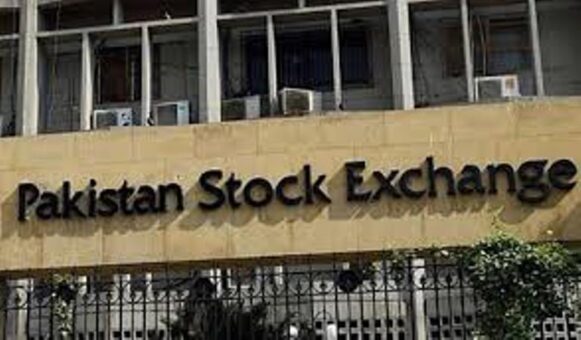Karachi, September 26, 2023 – Pakistan stock market saw a decline on Tuesday, with the benchmark KSE-100 index of the Pakistan Stock Exchange (PSX) closing 116 points lower. The market experienced range-bound trading activity during the session.
READ MORE: Pakistan Stock Market Records Slight Decline of 27 Points in Lackluster Trading
Here are some key details about the day’s trading:
Closing Index: The KSE-100 index closed at 46,278 points, down from the previous day’s closing of 46,394 points.
Market Momentum: Analysts noted that Pakistan’s equities had a relatively better day in terms of both market momentum and trading volumes.
READ MORE: Share Investors to Closely Monitor Economic Challenges Next Week
Intraday Range: The KSE-100 index traded in a range of 245 points, fluctuating between a high of +110 points and a low of -135 points during the trading session.
Sector Performance: Several sectors, including Banks, Exploration & Production (E&P), Technology, and Fertilizers, contributed negatively to the index. Investors chose to trim their positions in companies like HBL, PPL, SYS, ENGRO, and MEBL, which collectively resulted in a loss of 108 points. However, some sectors such as NESTLE, MCB, and ATRL performed positively and added 55 points to the index due to buying interest in those stocks.
READ MORE: Pakistan Stock Market Gains 313 Points Following General Election Date Announcement
Trading Volumes: The total trading volume for the day reached over 258.8 million shares, with a total value of approximately Rs 6.7 billion.
Top Volume Stock: PIAA led the volumes chart for the day, witnessing a significant volume of over 39.4 million shares changing hands.
READ MORE: Pakistan Stock Market Experiences Modest Decline of 20 Points in Quiet Trading
The trading day saw a mixed performance in various sectors, leading to the index’s decline by 116 points, or 0.25 percent. While some sectors experienced selling pressure, others attracted buying interest. The market appeared to be influenced by a combination of factors, including investor sentiment, economic conditions, and global developments.
